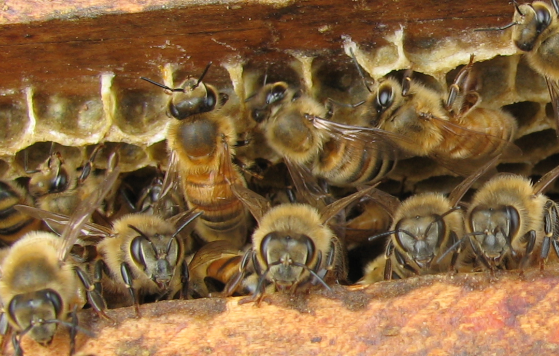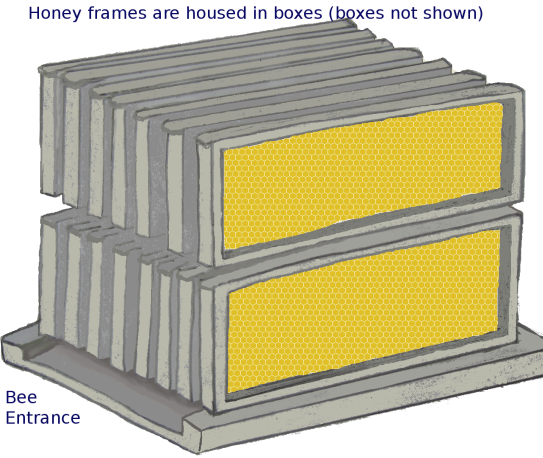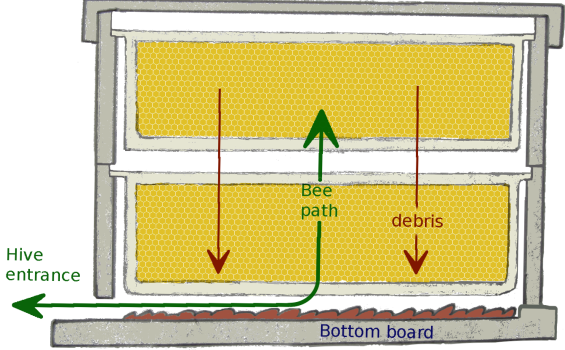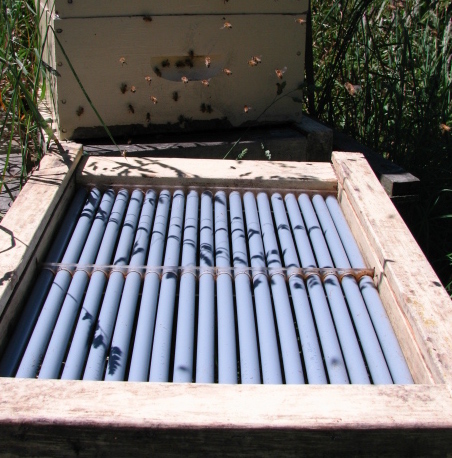Bees are industrious, organised and intelligent. Instead of explaining this in an article, I submit the following photo to the reader. See how those bees are watching me whilst I was checking out their health by opening their hive.

Like other Fauna and Flora, bees have been domesticated. The environment of domestic bees were changed by the introduction of artificial hives. Most honey bees are managed in in boxes where they store their honey in rectangular combs that are easily harvested. Feral colonies (bee colonies their native habitat) are not the norm. Whilst a lot of feral bees have been decimated by pests like the Varroa mite, feral colonies have proven to be more resistant to pests than domesticated bees.
Man-made beehives normally adopt the Langstroth design. Bees store their honey and babies in frames. About nine of these frames are placed in boxes. A number of these boxes are stacked on a “bottom board”.

Bees normally land on the bottom board and walk into the hive entrance at the bottom.
At the end of spring, bee keepers empty about half the honey out of each hive. Some commercial bee-keepers can be mercenary about the amount of honey they harvest. To ensure that bees make it through winter, bee-keepers feed the bees sugar water or an equivalent. This is like raiding the fruit and veggies and replacing it McDonalds food.
Varroa mites are like big ticks. If you were the size of a bee, a Varroa mite l;arger than a rat would be sucking your blood. A bee with more than one Varroa mite does not last long. Most bee-keepers use insecticides to control the amount of Varroa.
Bees will clean out their hives by removing dead bees, waste, the odd Varroa mite and other debris from the combs. As bottom boards are flat, the debris normally accumulate there. The beehive entry point therefore become the accumulation point of the hive debris.

Live mites often end up on the bottom board with the debris, where they can re-attach themselves to bees that walk in and out of the hive.
Some bee colonies spend more effort on hive hygiene by cleaning out their hives. It is well known that bees that are hygienic are more resistant to Varroa mite and pests.
Many scientist say there is no single cause to “colony collapse disorder”. “Colony collapse disorder” seems to be related to infections and Varroa.
The hive can be seen as an ecosystem that include bees and bee pests. The introduction of the artificial hive has changed this ecosystem, allowing pests to evolve their behavior to gain a competitive advantage.
Unhygienic hives are a breeding ground for many illnesses and may be the cause of colony collapse disorder (just like damp, drafty houses cause many illnesses in humans)
One method to improve the hygiene design of bee boxes, is to install a bottom board that allow debris (including live Varroa mites) to fall through onto the ground.
I have made such a bottom board,- as shown in the picture.




